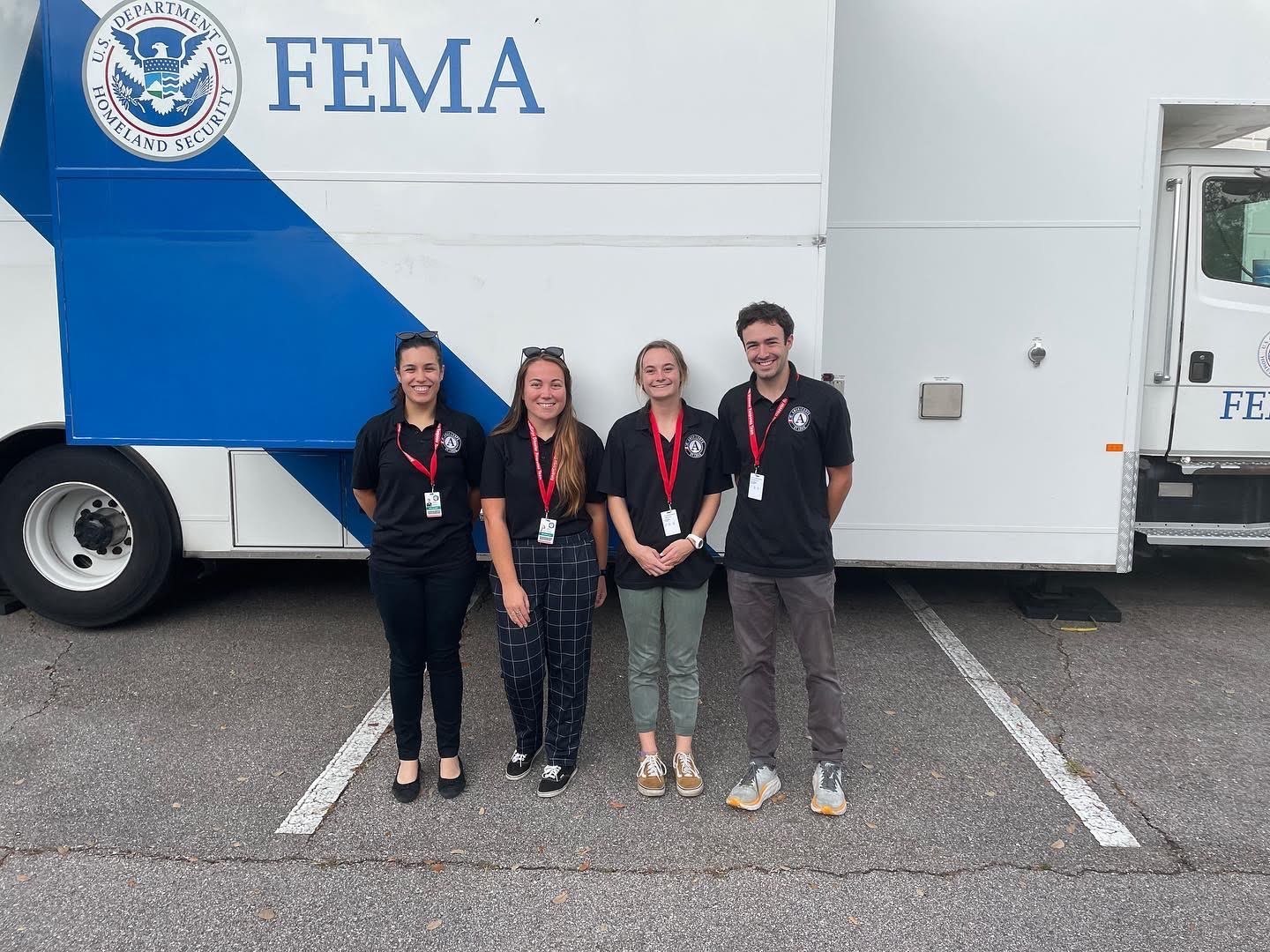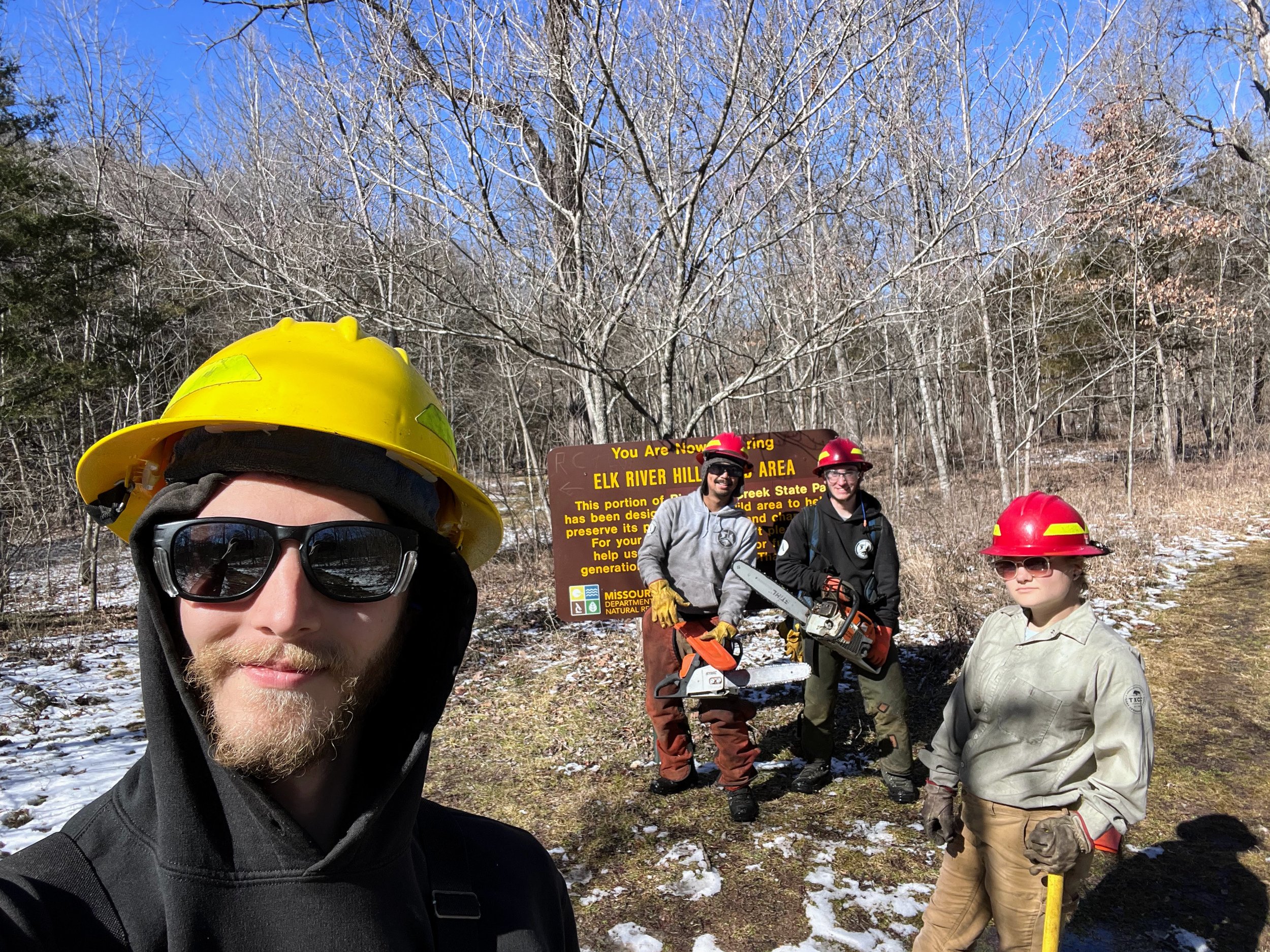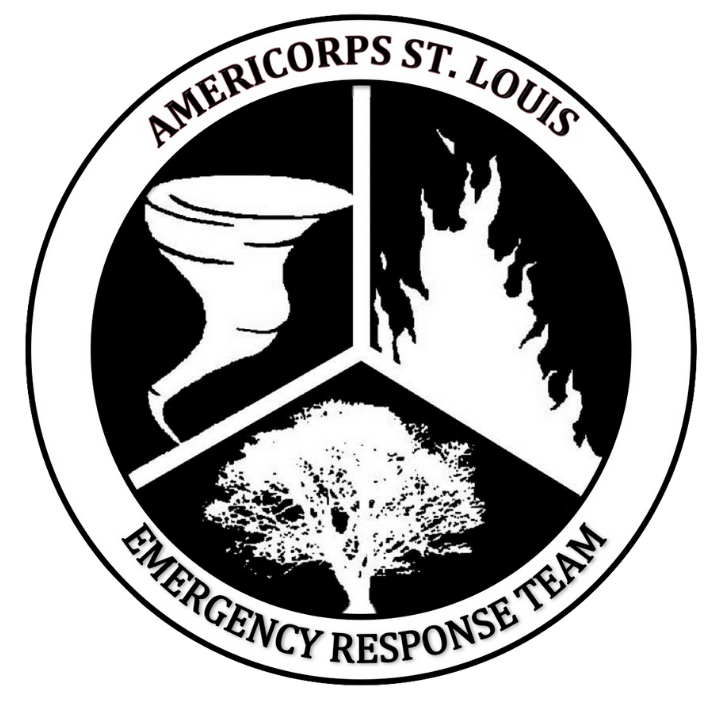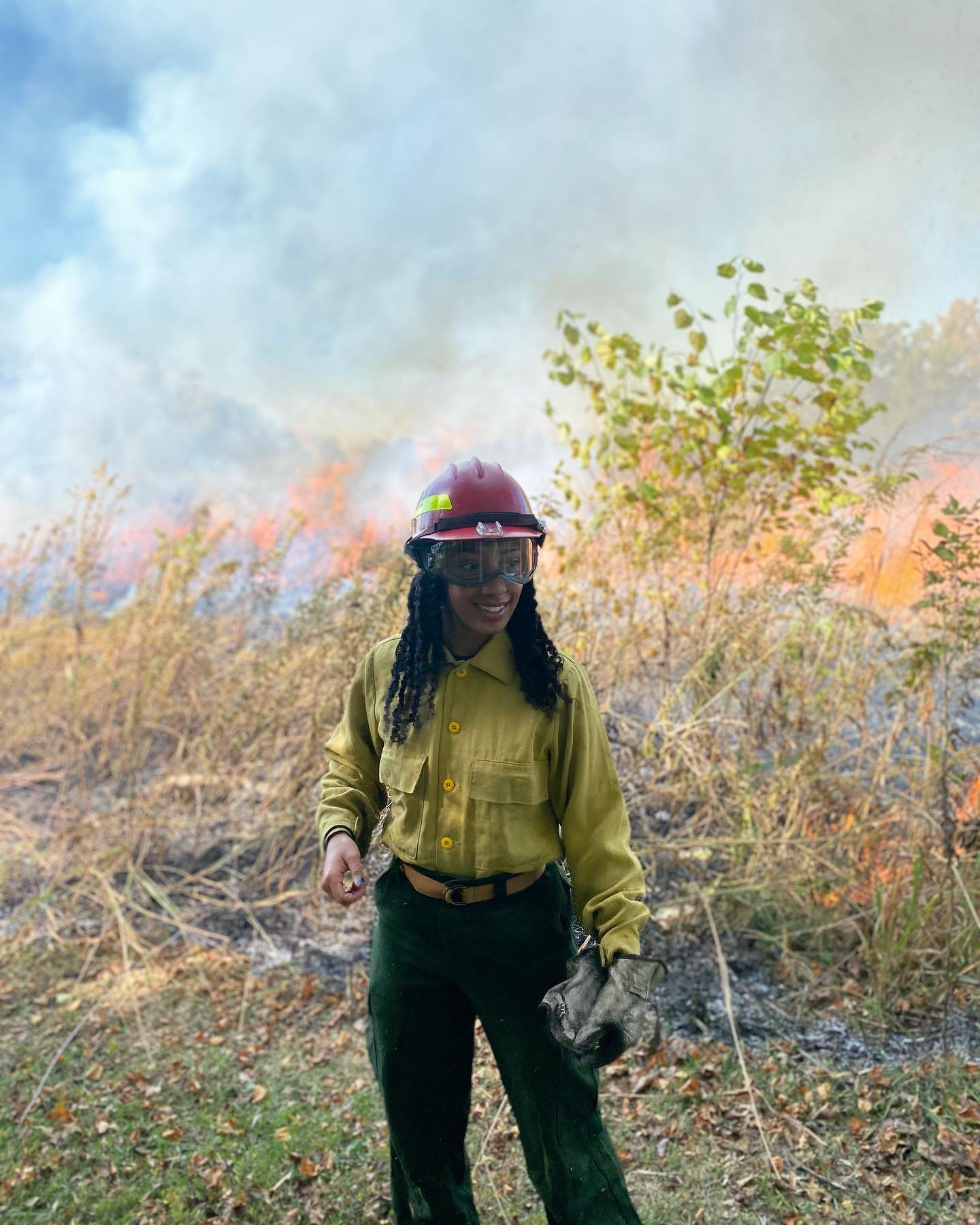
Be an AmeriCorps National Service Member

























Applications for the 2025-26 term are OPEN
Program Details:
-1700 Hour (Full Time) AmeriCorps State/National Service Term
-September 2025 - August 2026
-Based in St. Louis, MO
-Service projects in Missouri and Illinois, summer culmination project out of state, disaster deployment opportunities nationwide
-$20,400 living stipend total (paid out bi-weekly) & $7,395 Education Award
details of the position are subject to change based on anticipated grant funding
-
As part of our 46-Member Emergency Response Team (ERT), you will gain experience and training in the fields of environmental stewardship, wildland fire, and disaster response over the course of an 11-month AmeriCorps National Service term. The ERT functions as a conservation corps that assists partner organizations with vital natural resource management and restoration projects, including trail building and maintenance, habitat restoration, invasive species removal, and prescribed burning. The ERT also acts as a multi-functional rapid deployment group able to respond throughout the country to floods, tornadoes, wildfires, hurricanes, and other disasters. The service term operates from September through August, with ACSTL operating as many as eight crews at a time throughout Missouri, Illinois, and/or on disaster deployment. Teams complete projects in partnership with non-profit, local, state, and federal agencies. Members frequently travel for week long, overnight projects across the state.
No prior experience is necessary, and all experience is welcome. Through the program, Members receive training and certifications in a variety of skill sets including chainsawing, wildland firefighting, and emergency incident management. Additional opportunities to develop leadership experience through the Assistant Team Lead program are available later in the service term. These experiences and certifications leave Members well qualified in related career fields after their service.
ACSTL provides a challenging and fun opportunity to explore the conservation, fire, and disaster fields; serve the environment and local/state/national community; meet people from different backgrounds; enjoy an outdoor office; earn money for education; and be a part of a supportive, welcoming community.
-
Getting really down into the weeds here (pun intended)!
Environmental Stewardship: The normal day-to-day side of our program is the environmental stewardship focus area. There will always be Members serving on environmental stewardship projects, even if other Members are deployed on disasters. These projects consist of a wide variety of activities and may include invasive species removal (including herbicide application), glade and habitat restoration, hazard tree removal, trail maintenance and building, and fireline construction for future prescribed burns. We partner mainly with the Missouri Departments of Conservation and Natural Resources, the U.S. Forest Service, and Missouri conservation organizations and nonprofits, including the Ozark Trail Association, Great Rivers Greenway, and Forest Park Forever.
Wildland Fire: A year with ACSTL affords Members a unique glimpse into potential career paths along both federal and non-federal fire careers through the training opportunities provided both internally and by our partner organizations, scheduled field projects, and networking opportunities with our partners and our vast alumni network.
Many of our partner agencies engage in prescribed burning operations when weather allows; most prescribed fire activity occurs between February and April in Missouri and Illinois, but prescribed fire windows can occur anywhere between October and May. ACSTL teams are generally engaged in both preparation activities (fireline construction & maintenance, timber stand improvement, glade restoration) and actual firing operations. The U.S. Forest Service (Mark Twain National Forest and Shawnee National Forest) utilizes ACSTL teams as a qualified Type 2 Initial Attack (IA) resource for both prescribed burn operations as well as wildfire standby and response between February and April. There are also opportunities to gain non-federal fire experience with state partners as well as other non-government organizations, such as the Missouri Department of Conservation, Missouri Department of Natural Resources, and the Illinois Department of Natural Resources.
Fire experience is not guaranteed for all Members, but most people do get some experience and everyone gets fire training. We do our best to place Members who want experience on projects where the likelihood of burning is higher.
Disaster Response: As an Emergency Response Team, we are able to respond to disasters across the country and locally. However, we only respond to disaster incidents when our assistance is officially requested by the local emergency management entity. This means that even if there is a very large disaster somewhere in the country during the service term, our program does not respond without being requested. Like with fire, we cannot guarantee disaster response experience as every year varies due to weather, timing, and other factors. Therefore, you could potentially spend your entire service year on conservation projects without deploying to a disaster.
When deployed, there are different types of services you could assist with. Over the past three decades, ERT Members have been involved in every part of a response effort, including volunteer and donations management, warehousing, database management, call centers, as well as on the more direct service side with debris cleanup, sandbagging, muck n gutting, and hazard tree removal. Due to the training they receive and our experience as a program, our Members often find themselves serving behind-the-scenes in an office environment helping to organize and manage the response effort using the Incident Command System (ICS). Our teams can serve in a coordinated effort with other AmeriCorps Disaster Response programs, or just as one small team assisting other voluntary agencies. During a deployment, you could be serving long hours with limited time off. It is important to note that since we may deploy anywhere in the country, you could be away from St. Louis for a long period of time.
-
Most of our conservation and wildland fire projects last five days, Monday through Friday, with the weekend off. Some projects are 10 days, Monday through Wednesday of the following week, with the subsequent Thursday through Sunday off. Teams are usually 4-6 Members, including one Team Lead. We try to rotate team members every few weeks, so ideally every Member serves with everyone else in the Corps during their term. Sometimes team members change on a weekly basis.
In a typical week, Members arrive at the St. Louis office early Monday morning, have a briefing with the whole Corps, meet with their project team, pack out the tools and food needed for the week, travel to project sites in program vehicles throughout Missouri (and sometimes Illinois), and then return to St. Louis on Friday or the following Wednesday. All areas of our program are incredibly weather dependent since we mostly serve in the outdoors. If teams do not go out for days at a time due to extended bad weather, normal project timelines may be switched around.
Members chosen for disaster deployments may be scheduled for project lengths as little as one day, up to one month, depending on the type of disaster, the location, and the support requested of us.
-
Must be a U.S. citizen, U.S. National, or Lawful Permanent Resident
At least 18 years old by the program start date
Have at least a high school diploma or GED
Must pass National Service criminal history checks, at no cost to the applicant
Physical Health Information: Members must maintain a high level of physical fitness during their 11-month term of service in order to safely carry out the duties required for a manual labor position. A position with ERT requires extensive walking, bending, kneeling, lifting, pushing, stooping, standing, carrying loads of up to 50 lbs, handling hand and power tools, and other physical labor for extended periods of time. Members will serve primarily outdoors, in all kinds of weather (heat, cold, rain, snow, etc). Should accommodations be needed, you will be asked to submit a letter showing you are medically cleared to serve safely with ACSTL. This letter should state recommended accommodations.
-
Open to Learning: Applicants do not need any prior experience. Successful ERT Members are willing to learn new skills and have the ability to function as supportive and dependable teammates, even in times of extreme stress and adversity.
Flexible: Members should be flexible, open-minded, and prepared for a variety of unexpected experiences throughout their term of service. An interest in the outdoors, traveling and adventure is desired as Members spend most of their time out of town, living communally in rustic conditions. We are technically always on call for a disaster, and Members must be ready to change plans at the very last minute in order to respond. You will spend much of your service term with plans changing from week to week or even day to day.
Supportive: We are most interested in finding a corps of people from different backgrounds. People with less traditional experiences are highly encouraged to apply.
Committed: It is important to note the commitment that is required to be a Member here and the importance of being able to commit for the full 11-month term. We invest heavily in the development and training of our Members and aim to foster a mutual respect with the program, encouraging Members to help us improve as an organization and to consider serving for more than one term.
-
$1,800 (pretax) monthly living stipend
$7,395 Education Award after the completion of the program (please see www.americorps.gov for more information)
Loan deferment and interest forbearance on qualified student loans during term of service
Health insurance reimbursement, if applicable
Free mental health support options
2-week winter break and 6 national holidays
Paid Personal Vacation Days and Sick/Mental Health Days
Discounts for outdoor gear, YMCA Memberships, cell phone plans, public transportation, tax filing, and car insurance available
Networking and professional development
U.S. Forest Service Preferential Hiring eligibility through the Public Lands Corps
Training and Certifications: All Members receive extensive training and certifications throughout their term in the areas of environmental stewardship, wildland firefighting, and disaster response. Some of these trainings include team building and leadership skills, chainsaw and other power equipment operations, wildfire and prescribed burn operations, hand tool use and maintenance, risk management approaches, introduction to disaster services, Incident Command System, emergency communications, Psychological First Aid, and basic First Aid/CPR.
Partner availability permitting, Members will have the opportunity to attend chainsaw and wildland fire training with the U.S. Forest Service. Members are generally afforded the opportunity to test for their S-212 Wildland Fire Chainsaw certification as a FAL3 (Basic Faller), as a Type II Wildland Firefighter (FFT2), and will receive their Incident Qualification Card (Red Card) through the U.S. Forest Service. The baseline level of fitness required for a Red Card includes being able to pass the wildland firefighter Pack Test: a 3-mile walk carrying a 45-lbs pack completed in under 45 minutes.
As the term progresses, there will be further opportunities for development. One of these avenues is the chance to learn how to lead teams on stewardship projects through the Assistant Team Lead program: dedicated weeks of shadowing, coaching, and mentorship with second-year Team Leads at your own pace to give you support and get you comfortable with leading a team of your peers. It is a collaborative experience with Team Leads to support the background, scheduling, communicating, management and facilitation of success for all things project related.
-
Housing: All ERT Members must find their own permanent housing in St. Louis. There are multi-bedroom apartments and houses that current Members share, and those rooms usually become available once their term of service ends. Members have the opportunity to connect with each other virtually after they are hired and before they arrive in St. Louis to coordinate roommates and living situations. ACSTL is happy to help facilitate the housing search, but it is ultimately each Member’s responsibility to find a permanent situation for at least 12 months (September to August). The cost of living in St. Louis is still very affordable, especially if Members live together and split rent and utility costs. On average, AmeriCorps Members spend $350/month on rent.
Housing is provided while Members are in service on conservation projects outside of St. Louis or on disaster deployment. Housing ranges from camping to garage shops to seasonal housing to AirBnBs, depending on availability, weather, funding, etc. Most housing is on the rustic side. We are not able to currently offer financial relocation assistance to Members moving to St. Louis.
Equipment/Uniforms: ACSTL provides most of the personal protective equipment (PPE) needed to serve safely, including a duffel bag, work pack, helmet, fire protective clothing (Nomex), and AmeriCorps uniforms. If needed, we also have tents, sleeping bags, sleeping pads, hiking backpacks, etc., which you may borrow for your term of service but then return in good condition at the end. The only major expense we ask of Members to cover is part of the cost of new fire boots (payment plans are available). You will need to provide your own work pants and hiking boots. We recommend waiting to buy anything until after arriving in St. Louis since we have extra equipment and clothing at our headquarters that are donated.
Food: ACSTL provides a food budget for Members while they are serving. Teams buy groceries as a team and cook group meals. Members should only need to use their own money to buy extra personal snacks or specific foods if they have a dietary restriction. Depending on your overall personal financial situation, you may qualify for SNAP benefits during your term of service.
Personal Vehicle: A personal vehicle is not required for the program. ACSTL owns a fleet of work trucks that teams travel in to and from projects and deployments. Usually about half the Corps have personal vehicles. It makes it easier for errands and personal travel if you have a car, but it’s very much a personal choice. Many housing options are located within walking or biking distance to our headquarters.
-
AmeriCorps St. Louis is committed to building a culturally diverse organization and fostering an environment of respect and inclusiveness, with equal access to programs, facilities, and employment amongst all individuals. It is our policy to maintain an environment free of harassment and discrimination against any person based on age, race, color, ancestry, national origin, religion, creed, military service, sex, sexual orientation, gender identity, marital or family status, pregnancy, pregnancy-related conditions, physical or mental disability, genetic information, political ideology, or legal source of income. Discriminatory conduct and harassment, as well as sexual misconduct and relationship violence, violates the dignity of individuals, impedes the achievement of our mission, and will not be tolerated.
More information can be found at americorps-stl.org/values -
AmeriCorps St. Louis (ACSTL) is a nonprofit based in St. Louis, Missouri, that runs a 46-Member AmeriCorps National Service program. Our Emergency Response Team (ERT) was one of the first AmeriCorps programs to exist, since the inception of AmeriCorps National Service, and has been operational every year since 1994. Our ERT program has three areas of focus: Disaster Response, Environmental Stewardship, and Wildland Fire. Our motto is “See The Need, Meet The Need,” which we take to heart in everything we do, as we always strive to reach those who are least served, last served, or never served.
To Apply
Submit an Application and reference information using the form linked below, or apply through the AmeriCorps National job portal.
Note: Two references are required in order for your application to be fully considered. References my include work supervisors, volunteer/project leaders, teachers, coaches, counselors, etc. Please do not use family members or close friends unless you are unable to provide any professional references. Ideally, references should know you for one year or more.
If you have any questions about the application process, please call us at 314-772-9002 or email us at serve@americorps-stl.org.
Apply through acstl.org
Apply directly to our program using the link below. The application should take 5 - 15 minutes to complete. An up-to-date resume is required as an attachment, as well as contact information for two references. Please call us at 314-772-9002 or email us at serve@americorps-stl.org if you have any questions or issues using this form.
Apply through AmeriCorps.gov
Visit my.americorps.gov and search for “AmeriCorps St. Louis Emergency Response Team” and fill out an application through the AmeriCorps national job portal. You can use this same application to apply to other AmeriCorps programs. You will submit contact information for two references, and AmeriCorps will prompt them to complete the reference request.
Guide to applying for positions via the AmeriCorps portal

Tips, Tricks, and Additional Benefits of AmeriCorps Service!
Past Member Testimonials
“There are two things I will definitely remember the most as I embark on my new journey and leave AmeriCorps. The first one would be the relationships I developed. I have told a handful of people here that I have never had friends like this. People that show up for me in ways that I couldn't help me become a better person, all while teaching me excellent service skills. I couldn't have asked for better friends than the one I have made during this program, and I hope to keep in touch with them in the years to come. The second thing is the whole experience. Coming into the program, I honestly didn't know what to expect, and boy was I way over my head! I was challenged physically, emotionally, and mentally throughout the years from many failures and successes. Even going through so much in and out of service, I wouldn't have wanted my year to go any other way, and I will be telling my kids about their mom, who was on an Emergency Response Team and a licensed sawyer!!”
— Ellie Burnett, 2021-22 AmeriCorps Member - currently a Community Developer with Prince George’s County Office of Homeland Security/Emergency Management Division
Listen Up!
Emily Ray was a Member with AmeriCorps St. Louis from 2021 - 2024.
After graduating from college in 2020, Emily took a job at an organic farm in Washington state. Shortly after, she found two internships: a remote one with the National Oceanic and Atmospheric Administration and another with the Dennis Conservation Land Trust on Cape Cod. Both of those experiences helped Emily make connections that led her to AmeriCorps where she’s served for the last two plus years. Emily graduated with a B.A. in Geography and Environmental Studies from Middlebury College.
Listen below for an interview Emily gave with the Time4Coffee podcast!
-

Explore the City
St. Louis's affordability goes beyond housing. The best parts of the city are accessible free of charge to residents!
-

Make Your Stay Here Homey!
St. Louis has 79 different neighborhoods, each with its own distinctive style and characteristics
A Unique Experience:
Snapshot of Member Life
AmeriCorps St. Louis provides Members with a very unique service experience. Whether you’re interested in conservation, wildland fire, or disaster response (or all three!), we offer some level of customize to fit the experience you’re looking for! We take Member preference into consideration when scheduling projects— whether that be the type of service project, a particular partner agency, length of project, etc. The possibilities are endless!
The term of service can be roughly divided into several periods: training (September to October), fall/winter - fireline prep, glade restoration, invasive species removal & trail work (October to February), prescribed fire/wildfire season (February to April), summer - invasive species removal, recreation/trail work (April to June), and Montana - recreation/trail work (July to August). Disaster response can happen throughout the term!
Average Member Service Year Outlook
Stewards of the Earth: The Impact of Your Service
The three pillars of our AmeriCorps program— environmental stewardship, wildland fire, and disaster response— all play a very important role in improving our environment.
The impacts listed on the right were developed based on a program evaluation conducted by the Consult Your Community - Washington University in St. Louis initiative - there are many more impacts on the climate, these are just a few examples!
Hazard Tree Removal & Mitigation:
Removing one older tree allows for smaller, nutrient starved trees to flourish
Stops the spread of invasive pests
Trail Maintenance:
Properly maintained trails ensure visitor safety and trail enjoyment, and reduces the environmental impact of hiking and human activity
Prescribed Fire
Prescribed fires remove fuel loads from forests protecting communities from extreme wildfires, recycle nutrients back into the soil, and well constructed containment lines protect valuable infrastructure and human lives
Below are some examples of how our environmental stewardship, wildland fire, and disaster response projects are impacting the environment. Click on the images to learn more!
Woodland Restoration: Native wildflowers reemerge in an area previously overgrown with intrusive vegetation. ACSTL Members removed intrusive eastern red cedars trees and participated in prescribed burns that allowed for the regrowth.
Endangered Species Protection: During the summer of 2022, Members assisted Shaw Nature Reserve with trail restoration, and participated in a wildlife survey of bats in the area. Well maintained trails help protect the surrounding flora needed for biodiversity to support endangered species.
Prairie Restoration: Prairie Ridge Natural Area is a unique site in Illinois, dedicated to conserving the rarest members of Illinois' native tallgrass prairie and marsh communities. Members have helped seed the prairie.
Invasive Species Removal: In 2020, ACSTL partnered with Bellerive Acres Bird Sanctuary to remove invasive bush honeysuckle in order to to restore vital bird habitat.
Tree planting: ACSTL Members participated in a collaborative effort with Great Rivers Greenway and other partners to plant native trees along the Meramec River watershed to improve habitat for birds and other wildlife.
Wildfire Mitigation: From 2019-2021, ACSTL partnered with the city of San Rafael, California for a fuel mitigation project to help reduce the risk of destructive wildfires.
Restoration: In partnership with the Greenwood Cemetery Preservation Association, an initiative was launched in 2022 to assist with environmental and historic preservation efforts. Members engaged with a local community that is different from many of their own, while giving them the opportunity to learn about the history and ecology of the sacred land. In addition, restoring this public cemetery gives community members access to individuals laid to rest and the opportunity to enjoy the natural beauty of a designated green space in an area with a limited tree equity score.
Flood Response: In 2019, the Missouri and Mississippi Rivers experienced historic flooding across Missouri, Iowa, and Nebraska. ACSTL Members responded to several locations across the Midwest to assist with response and recovery efforts, including sand bagging and proving support to individuals impacted by the flooding. In response, one community in Northwest Missouri adapted climate resilient practices to prevent future flooding.
Burned Area Emergency Rehabilitation: During the summer of 2022, ACSTL partnered with the Beaverhead-Deerlodge National Forest in Montana to help rehabilitate recreation trails damaged by the previous years severe wildfires. Wildfires can cause damage that requires special efforts to prevent problems afterwards. Loss of vegetation exposes soil to erosion; water runoff may increase and cause flooding; sediments may move downstream and damage houses or fill reservoirs putting endangered species and community water supplies at risk.
















